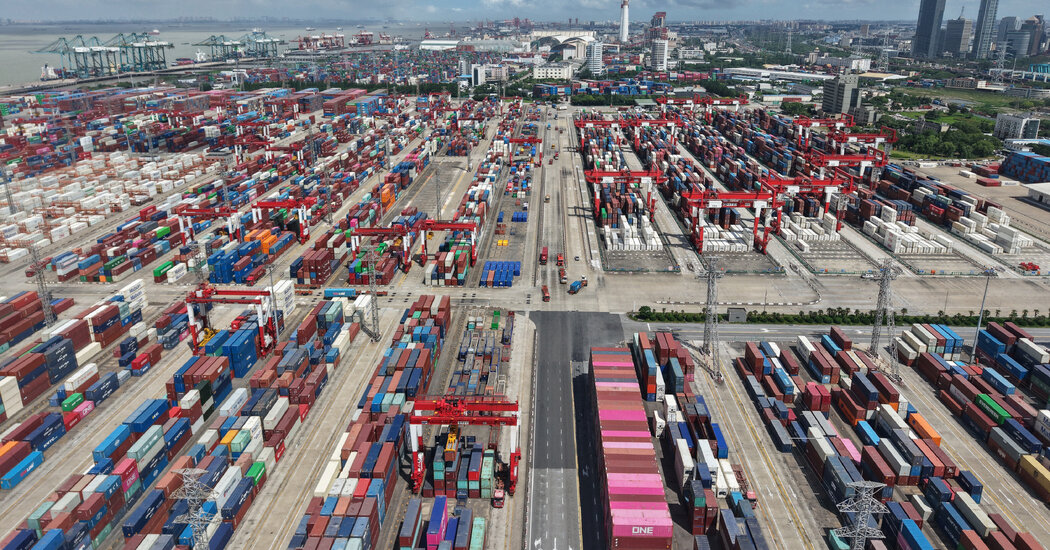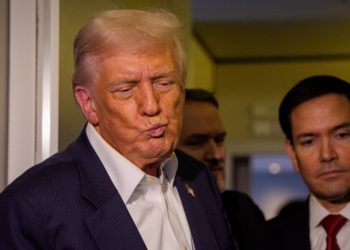Trump administration officials have hailed the makings of a potential trade deal that could have China buy American soybeans and pause the introduction of its new licensing system on rare earth minerals, while the United States pauses or removes some of its tariffs.
It remains to be seen what might be agreed when President Trump meets the Chinese leader Xi Jinping this week. But those and the other measures that U.S. officials have mentioned appear to largely restore the relationship to a status quo from earlier this year, before Mr. Trump began his latest trade war with Beijing.
The United States and China have shown their willingness to repeatedly escalate trade tensions and hurt companies that do business across the Pacific, before walking back measures and striking a truce. But the truces have quickly crumbled, calling into question how durable a new agreement would be.
Speaking on ABC News on Sunday, Scott Bessent, the Treasury secretary, said American and Chinese negotiators who met in Malaysia over the weekend had “reached a substantial framework” for the two leaders to discuss when they meet in South Korea on Thursday.
He said that a 100 percent increase in United States tariffs on Chinese exports scheduled for Nov. 1 had been averted, and that China had agreed to delay a rare earths licensing system “for a year while they reexamine it.” The Chinese also agreed to help the United States stop the flow of chemical ingredients used to make illicit fentanyl, and make “substantial agriculture purchases for U.S. farmers,” Mr. Bessent said.
On social media, Brooke Rollins, the secretary of agriculture, praised the planned soybean purchases as “big news.” She added, “China’s commitment to make substantial purchases of U.S. soybeans brings the market BACK into balance and secures years of prosperity for American producers.”
But critics said the Trump administration appeared to be claiming credit for solving a crisis of its own making. China stopped its soybean purchases earlier this year, after it put a tariff on American soybeans in retaliation for the tariffs Mr. Trump had placed on Chinese products in April.
Though the Chinese government had clearly been developing its licensing system for rare earths for some time, it chose to enlarge the system following Mr. Trump’s sweeping “Liberation Day” tariffs in April. Beijing further expanded the system this month, after the United States put new restrictions on providing technology to thousands of additional Chinese companies.
Paul Triolo, a partner at DGA-Albright Stonebridge Group, a consultancy, said the Trump administration had been pursuing a policy of “escalating to de-escalate,” which he called “a losing strategy.” He pointed out that this was the fifth meeting of trade talks that had been dominated by China’s curbs on rare earths.
“Both sides can hurt each other,” Mr. Triolo said. “All it’s done is reduce market share for companies across the board.”
Mr. Trump’s deal-making is famously unpredictable, and his meeting with Mr. Xi could result in other deals. Chinese officials have floated the possibility of more substantial purchases of U.S. products, as well as greater Chinese investment in the United States. In another interview, on NBC’s “Meet the Press,” Mr. Bessent said the two sides would probably discuss “more balanced trade,” as well as “President Trump’s global peace plan.”
But talks have been much less intensive than in Mr. Trump’s first term, when negotiators went back and forth for months to hammer out a 90-page trade agreement on issues ranging from intellectual property and banking to agriculture. On Friday, the Trump administration said it was beginning an investigation into China’s failure to comply with the terms of that agreement.
Jonathan A. Czin, a fellow at the Brookings Institution, a Washington think tank, pointed out that Mr. Xi was coming to the meeting after announcing China’s next five-year plan, which calls for intensifying the country’s focus on manufacturing and technology. Those plans run counter to longstanding U.S. concerns about China’s unfair trade practices, which ostensibly started their trade clash, he said. But those topics appeared to be largely absent from the agenda.
“It’s really striking to me that, not only are they not even discussing it, we’re discussing one issue at a time,” Mr. Czin said. “We’re talking about TikTok, or about soybeans, these kind of sectoral or even firm-specific issues, rather than talking about the big, meaty, substantive issue that may have been at the heart of this at the outset.”
Ana Swanson covers trade and international economics for The Times and is based in Washington. She has been a journalist for more than a decade.
The post Trump’s China Deal May Avert a Crisis of His Own Making appeared first on New York Times.




